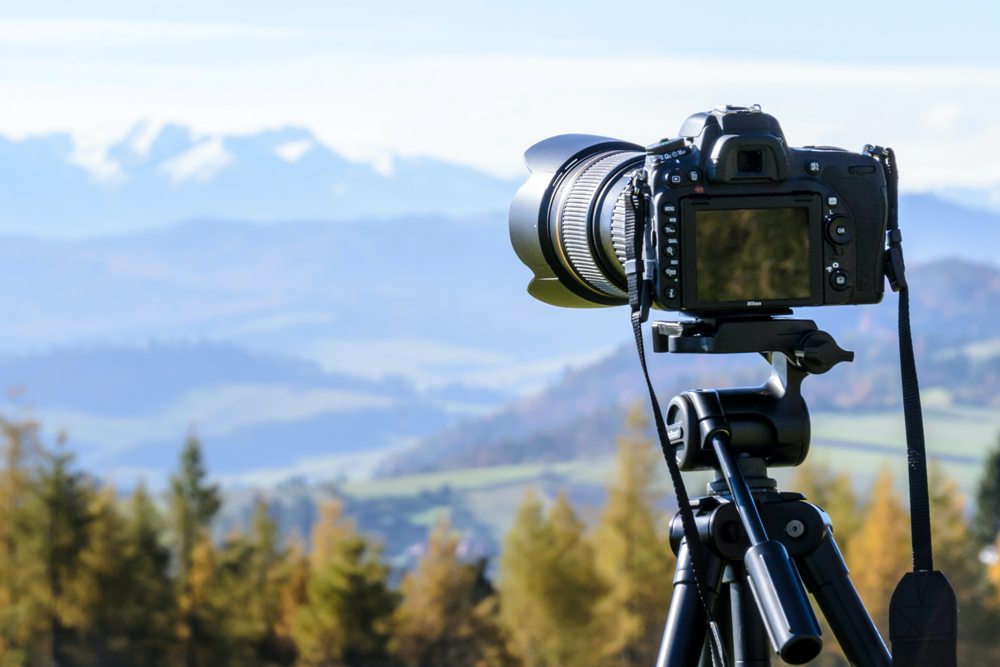
As of late, many people have had the time to take up new hobbies that they might never have had the opportunity to in the past. Art has been proven to help improve overall mental health, and a popular choice that has recently been capturing people's creative brains is photography. Photography is an alluring art form for a number of reasons. It's easy to start yet difficult to master, making it a perfect vocation for people to really sink their teeth into. In addition to this, it has a tremendous capacity to create truly evocative pieces of art reflective of the artist themselves. All in all, it's not hard to see the appeal. But how can you take your craft to the next level? Whether you're picking up your camera for the very first time or looking to elevate your existing skills, ane whether it's for professional use or just your own personal collection, there are always ways to improve.
1. Focus on the Shot, Not Your Equipment
While it can be easy to fall down the rabbit hole of endless camera, software, and lens comparisons, this school of thought can end up being ultimately distracting from the core of what makes a good photograph—and by extension, a successful and eye-catching portfolio. Good equipment can improve a good photographer, but it doesn't usually make an unskilled one good. Many talented photographers use lower-end technology, and some even work wonders with the typical iPhone camera that most of us carry around in our pockets every day. When coupled with an artistic eye and a couple of smart softwares (Gemini Photos is especially useful when trying to sort out your images on an often-restrictive smartphone UI: https://backlightblog.com/gemini-photos) there's little that a phone's camera can't achieve. That being said, if you're already well into the game, sometimes that extra definition courtesy of a quality DSLR can be entirely welcome. A general rule of thumb is that the equipment is merely the seasoning and not the whole dish. Apply the same principles as you would when composing or consuming a piece of fine art, and you'll find that your shots instantly improve.
2. Diversify to Prevent Monotony
Everyone's got their own unique taste, and that's what makes art exciting. Naturally, we're all drawn to different subject matter to different degrees. It might not be something we're even conscious of, and that's where it starts to get a little dangerous. One of the biggest threats to a well-rounded portfolio is monotony. Take a moment to objectively look at your current catalogue of shots and identify any trends that might emerge. Usually, we're not very conscious of them. It might even help to enlist an objective pair of eyes to let you know what's repeatedly cropping up. This isn't to say that having an area of expertise is a bad thing; on the contrary, most schools of photography have such specific requirements that it's generally a good thing to be well-versed in one genre. However, this doesn't mean that you can't still flex your creative muscles by challenging yourself with something a little bit more outwith your comfort zone. For example, if you're primarily a portrait photographer, think about your models and environments. Are your models bare-faced or do they tend to wear makeup? How closely cropped do you shoot them? Is it in a studio setting or elsewhere? There are a large number of ways to spice up your oeuvre, and you might even discover a new favorite niche you'd never even considered before.
3. Follow your Favorite Photographers
The best way to learn (in any kind of art) is through practice and consumption. We can learn so much from our peers and fellow photographers. Do some research and find some artists you look up to; you'll be able to find ways to incorporate elements of their work into your own.
At the end of the day, there's no right or wrong way to create art. There are a few things worth trying though to make sure that you're truly creating to the best of your ability. By constantly experimenting and being mindful of the creative process, you'll create a wealth of valuable experience that's sure to change the way you view your art. Photography is an incredibly diverse art form, and the possibilities are limitless.
EDITORIAL POLICY
Editorial Policy: The Flash List is dedicated to providing trustworthy editorial content by maintaining strict ethical standards, journalistic integrity, and credible professionalism regardless of any remuneration as working media. The Flash List is not affiliated with third-party companies mentioned and makes no endorsement or guarantee expressed or implied. The preceding article is intended for informational reference only, and does not constitute advice of any kind. Moreover, a qualified professional should be consulted regarding any lifestyle consideration, medical treatment, or monetary transaction, etc. Content contains affiliated link(s) for which compensation was received in accordance with USFTC regulations and terms and conditions.
MORE ON THE FLASH LIST
































